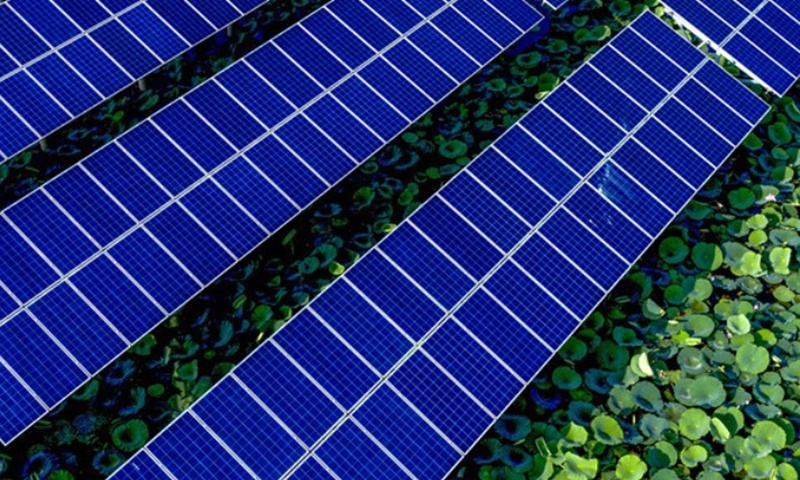
The undated photo shows the solar energy panels installed in a village in Lu Jiang county in Hefei, capital city of Anhui Province of China. (Photo: Xinhua)
China's environment authority on Tuesday published pilot rules for carbon emission trading management, days after the launch of the country's national carbon market, a move to further promote China's green, low-carbon development.
The Ministry of Ecology and Environment (MEE) on Tuesday released details of the "administrative measures for carbon emission trading" on its website, which aims to regulate the carbon trade and related activities within China. It will come into effect on February 1.
Previously, the first compliance cycle of the national carbon market for the power generation industry officially started on January 1.
According to the newly published trial, companies in the industries covered by the national carbon trade market with annual greenhouse gas emissions of at least 26,000 tons of equivalent CO2, should be listed as a key greenhouse gas emission unit.
The MEE will formulate a plan for total carbon emission quotas and allocation in accordance with the country's greenhouse gas emission control requirements and factors such as economic growth, industrial structure adjustment, energy structure optimization, and coordinated control of air pollutant emissions. The provincial environmental departments will regulate annual emission quotas for their regional companies.
Carbon emission rights trading shall be carried out through the national carbon emission rights trading system, which could be realized through the forms of transfer with agreements, one-way bidding or other methods that comply with the regulations.
Key emission units are responsible for the authenticity, completeness and accuracy of greenhouse gas emission reports.
On December 29, the MEE published a plan for setting and distributing carbon emission trade quotas in the power generation industry for the 2019-20 period, which listed 2,225 power generation companies and self-provided power plants.
"This quota plan, for the first time from the national level, consolidates the responsibilities of controlling the greenhouse gas emissions by companies," Li Gao, head of the climate change department at the MEE, told the media on Tuesday. "The companies are the main subjects for cutting emissions, so this move is significant for China's green low-carbon development."
Next, the MEE will also formulate and publish regulatory documents on greenhouse gas accounting reports and verification, carbon emission rights registration and transaction settlement to jointly establish the basic institutional framework for the national carbon market, the Global Times learned via a statement sent by the MEE.
The Chinese leadership's bold pledge to have CO2 emissions peak before 2030 and achieve carbon neutrality by 2060 adds the energy structure to emissions-cutting efforts, beefing up calls to go deeper into the carbon trading market.


